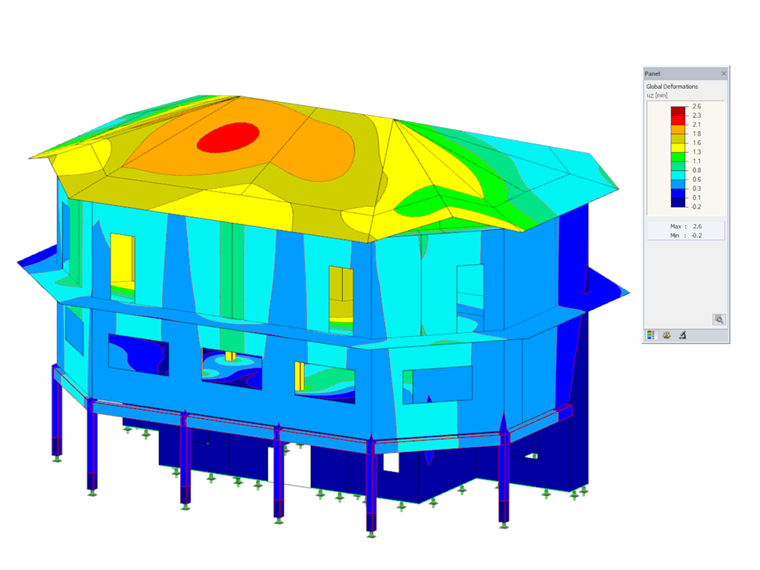|
Autor
|
Daniel Dlubal, Gbenga John Ogunjinmi, Alessandro Valentini
|
|
uniwersytet
|
Technische Universität München (DE)
Katedra Modelowania Komputerowego i Symulacji Katedra Informatyki Architektonicznej |
Do analizy statyczno-wytrzymałościowej wykorzystano oprogramowanie RFEM firmy Dlubal. RFEM is a finite element analysis program for numerical simulations and design of 2D and 3D models consisting of member, plate, wall, folded plate, shell, solid, and contact elements. Thank to the direct interaction between RFEM and Revit it is possible to create new models and adjust modifications in both directions.
Loads from dead load, usage, wind and snow act on the building. In particular, the high snow loads had to be considered by rigid support elements in the construction. The wind loads were determined using RWIND Simulation. This software is used for numerical simulations of wind flow. All the other loads were added manually. After the calculation all structural elements were designed in the ultimate limit state.
